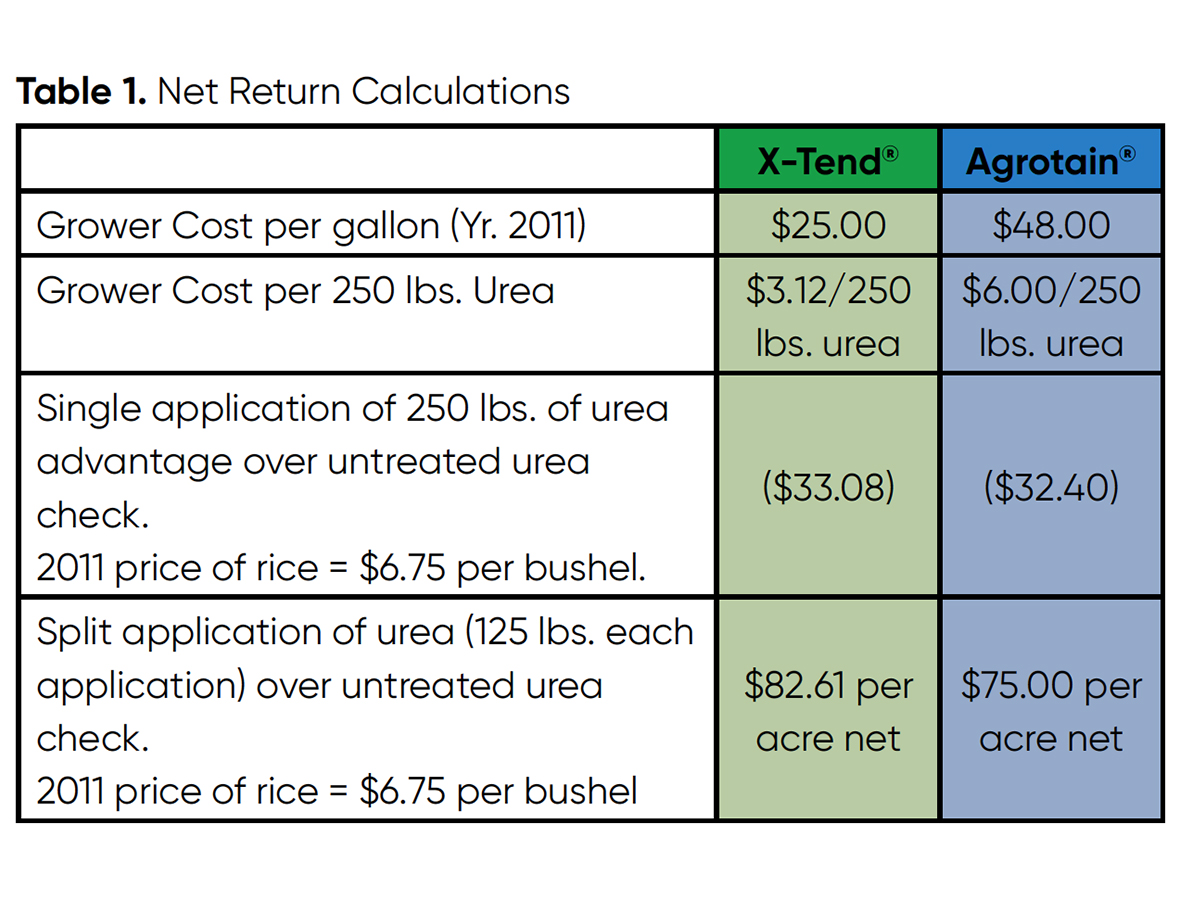Introduction
Nitrogen loss through volatilization begins to occur immediately after application unless the urea is stabilized. Agrotain® has been the industry standard for urea stabilization. In 2011, at Shoffner Farm Research, a trial was established to compare Agrotain® and the Huma® product X-Tend® to increase nitrogen use efficiency and rice yield (using the CL 151 variety) in Southern Missouri.
Materials & Methods
The experimental design consisted of six treatments in a randomized complete block. Two urea rate/timing regimes and three treatment options were arranged in a full factorial with four replicates. Application timing for the urea was targeted for 7–10 days prior to flood and a split application at pre-flood and panicle initiation (PI).
Urea was treated with X-Tend® or Agrotain® in a small batch seed treater. The seed treater was cleaned between batches. Huma® provided the product rate for X-Tend®, while the rate for Agrotain® was provided by the product label.
Urea needed for each plot was calculated, weighed, and spread uniformly using a Scott's Spin Spreader at each application timing. Pre-flood application was made on June 9. Flood was initiated 12 days later on June 21 and maintained until September 20. Rainfall recorded between pre-flood application and flooding was 1.86 inches.
Grain yield for each plot was measured by harvesting the center 5 feet of each plot with an Almaco SPC 20 plot combine on October 17. Grain harvested from each plot was weighed on an ADAM CPW plus-75 platform scale with 0.05 lb accuracy. Grain moisture was measured using a DICKEY-john mini-GAC plus moisture meter. Plot weight was adjusted to 12.5% moisture and converted to yield in bu/A. Yield data were subjected to analysis of variance at the 0.05 level of significance.
Results
No statistical differences were observed between treatments. However, X-Tend®, as measured by rice grain yield, performed as well as Agrotain® when urea was applied pre-flood at 250 lb/A or in a split application of 125 lb/A pre-flood followed by 125 lb/A at PI (Figure 1).
Missouri rice yields in 2011 were lower than in previous years. Average rice yield for this experiment was 106.5 bu/A. Planting was delayed approximately 1 month due to 17.9 inches of precipitation in April. Mid-May planted rice fields flowered during a period in late July and early August when daytime temperatures ranged from 93° to 106° F and nighttime temperatures ranged from 73° to 79°F. Recent discussion with local crop consultants indicated that yields were off 30 to 40 bu/A regardless of variety and that 100 to 110 bu/A was the average yield for CL 151 planted in mid-May in southeast Missouri.

Figure 1. Rice Grain Yield in bu/A for each urea rate and timing.

Table 1. Net Return Calculations
Conclusions
As demonstrated in Figure 1 and Table 1, the X-Tend® application increased yield by 14 bushels/acre, with a net return advantage of $7.61 per acre using X-Tend® vs. Agrotain®.
The dollar return of treated urea over untreated urea in split applications of 125 lbs. of urea clearly reflects an economic benefit of the treatments with X-Tend®. Future independent research should confirm this positive economic advantage and yield of X-Tend® over Agrotain® to rice producers.

